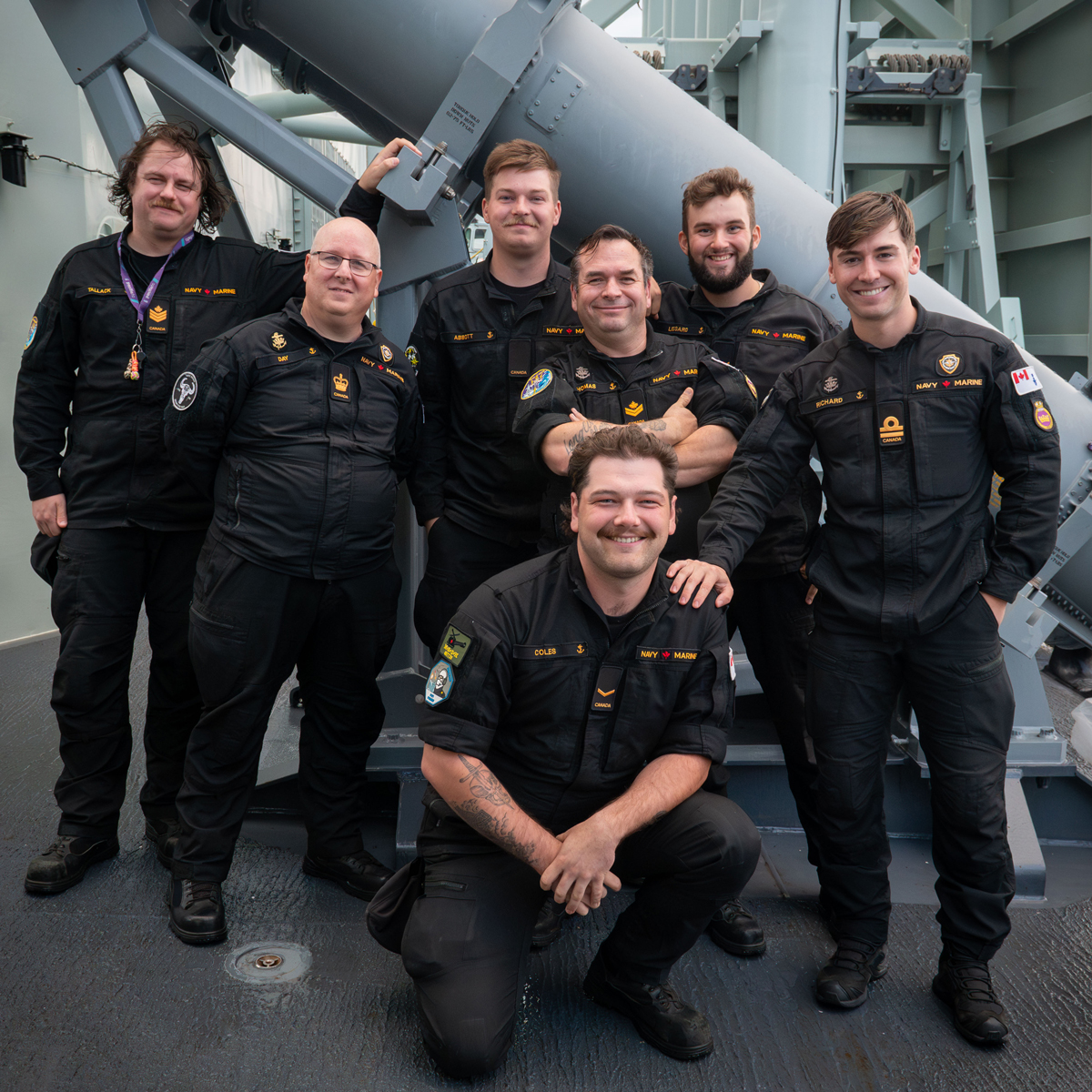Bulldogs Away! Mission Success for HMCS Regina
By Lookout Production on Nov 28, 2024 with Comments 0

Group photo of HMCS Regina’s Naval Electronic Sensor Operators and supervising Officer, taken next to one of the ship’s Harpoon missile launchers off the coast of California.
SLt Simon Gonsalves,
MARPAC Public Affairs
—
Under the bright Southern Californian sky, sailors onboard His Majesty’s Canadian Ship (HMCS) Regina participated in Joint Littoral Targeting Exercise 2024 (JoLTEX 24). During this training event, the crew had the rare opportunity to launch two advanced Block II Harpoon missiles soaring over the horizon and far beyond.
This live-fire training exercise, conducted in partnership with Canadian Joint Operations Command, was held on Oct. 23 at the United States Navy’s Point Mugu Sea Range, located off the Californian coast near San Diego. This year’s JoLTEX aimed to develop and test targeting processes to enable Royal Canadian Navy ships to strike targets effectively on or near land.
The Harpoon missile system, which has a maximum range of 124 kilometres, is the anti-surface missile carried by Canadian frigates, which can quickly engage a variety of surface targets with a high degree of precision. The lessons learned from Regina’s fire-support experience can now be leveraged by other Canadian warships operating in proximity to land.
According to Commander Jeremy Samson, the Canadian Patrol Frigate’s Commanding Officer, “HMCS Regina’s precise delivery of surface-to-surface kinetic effects during JoLTEX 24 demonstrates the crew’s commitment to combat readiness and their professional excellence.” When asked about the ship’s performance during the exercise, Commander Samson stated that he “couldn’t be prouder to be part of Regina’s outstanding team and what they’ve accomplished.”
However, not everything went according to plan initially—the first Harpoon missile fired by HMCS Regina during JoLTEX 2024 was aborted by American range staff shortly after launch. As safety is paramount during any military live-fire exercise, constant communication is required between the missile and the range facility. After launch, if connection is lost – even temporarily, and for any reason – the range will terminate the missile in flight.
HMCS Regina’s crew were well-prepared for this possibility. Realistic live-fire naval exercises are conducted to test a warship’s ability to quickly adapt and overcome changing circumstances, whether expected or unanticipated. After the first strike didn’t succeed, HMCS Regina’s combat team was able to rapidly launch a follow-on missile that successfully struck its target.
The exercise was more than just the successful missile hit on a near-shore target—JoLTEX 24 was also designed to test Canada’s high-level military targeting processes. Commodore (Cmdre) David Mazur, Commander Canadian Fleet Pacific, considers this year’s JoLTEX a success. Cmdre Mazur outlined that Canada’s Pacific Fleet “developed several important capabilities, as we honed our ability to streamline communication to and from a deployed warship and improved how we develop and strike targets in the maritime domain.”
JoLTEX 24, like many other realistic training opportunities, provided a valuable opportunity for both the sailors of Canada’s Pacific Fleet, as well as the operators of Canadian Joint Operations Command, to gather useful intelligence, determine valid targets, and strike them with advanced sea-based weaponry. By exercising the Halifax-class’s surface-to-surface missile system in near coastal environments, JoLTEX 24 affirmed that the RCN remains a vital partner in maintaining peace and security.

Filed Under: News Release • Top Stories
About the Author:





